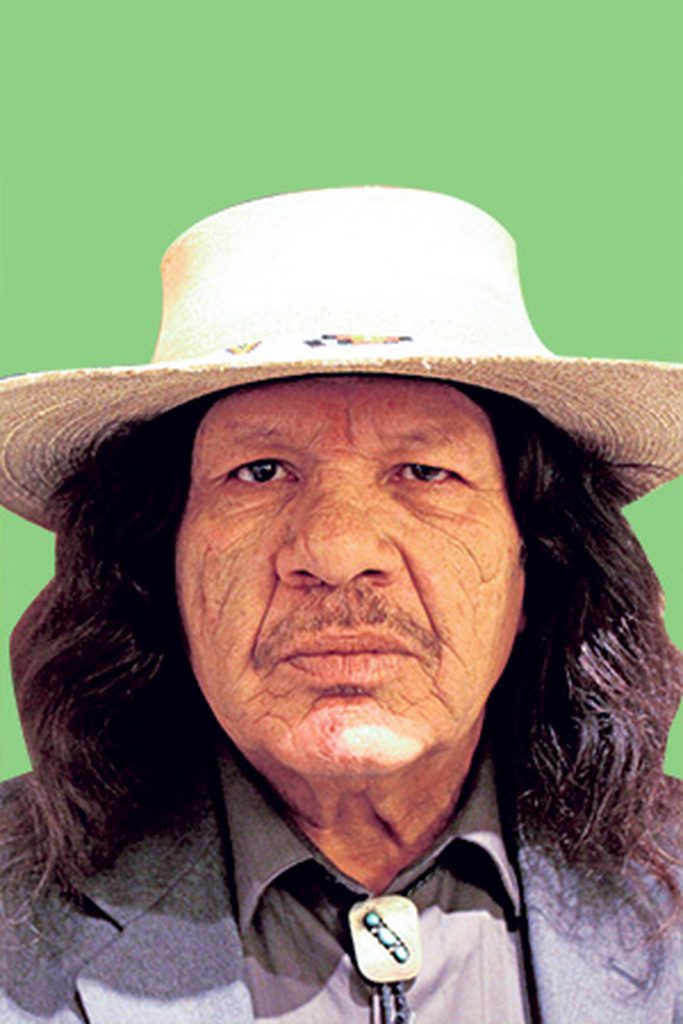
JERRY E. FUENTES, 66, a resident of Truchas who was falsely accused in the 1980s of attempted murder at Los Alamos National Laboratory, passed away in his home surrounded by his family on Thursday, October 15, 2020. He was preceded in death by his mother Floy, his father Gilbert, and his brother Tom Fuentes.
Jerry’s favorite thing to do was go fishing, and he loved the land we live on with a fierceness that showed in his advocacy and stewardship.
He will be missed and loved by his children Adam Fuentes, Matthew Fuentes, grandson Julias Fuentes and his partner Gloria Castillo, sisters Elena Fuentes-Ortiz, Dolores Guzman and brother Patrick Fuentes.
His memory and talent live on in the numerous movies and films in which he was featured. He fought a valiant battle with cancer which was much longer than any of us realized and that takes its toll on the mind and spirit.
Jerry Fuentes knew his life story would make a good movie. He just didn’t like dwelling on a comeback built on pain and prejudice.
Fuentes, who was falsely accused in the 1980s of attempted murder at Los Alamos National Laboratory, died last week.
He was 66 years old, a pearl of a gentleman who never let bitterness get the better of him.
Fuentes, of Truchas, died of small-cell lung cancer that spread to other parts of his body. I interviewed him for a column in July, and he did his best to be upbeat.
But he knew the odds were against him. He was on his third cancer, all of which he traced to his ordeal at the lab.
I met Fuentes at the state Capitol, where he was the most unconventional of lobbyists.
His bushy hair spilled beneath a Western hat adorned with beads. Never once did he ask to go off the record so he could slam a politician or float an unattributed trial balloon. Intrigue wasn’t his way.
If he had something to say, he said it. Fuentes was a quote machine without trying to be colorful.
He spent 17 years lobbying for more enlightened laws on industrial hemp, a tame cousin of the marijuana plant. Other countries turn hemp into suitcases, carpet, auto dashboards, clothing and myriad other products. The United States imported the merchandise while barring hemp production.
The Legislature in 2015 first approved a bill to permit research of industrial hemp. Then-Gov. Susana Martinez vetoed the measure, saying it conflicted with federal narcotics laws.
“She’s permanently living in the past,” Fuentes said, a quote the governor’s enemies ran with.
Fuentes claimed his criticism of Martinez led to a state audit of his taxes. But no one sanitized or quieted him.
Every comment he made was pithy. Declarative sentences were less likely to be ignored or misunderstood.
“I’ll sure miss our hallway conversations,” said Andy Lyman of New Mexico Political Report, one of many reporters who came to know and respect Fuentes.
Fuentes’ straightforward style was shaped by the worst time of his life. He couldn’t forget what a duplicitous supervisor at the lab had done to him.
Fuentes worked in the chemistry and metallurgy research section. Radioactive materials were accessible. They became a weapon used to harm Fuentes and smear his reputation.
Leon Duval, who was a supervisor at the lab, would falsely claim Fuentes and three other Hispanic employees sprayed radioactive plutonium-239 in Duval’s locker.
Duval’s complaint spawned a criminal investigation. Fuentes was tarred as leader of a pack out to get its supervisor.
Duval, who is dead, eventually would recant his story. He admitted he injected the plutonium in his locker, then blamed Fuentes and the others.
Fuentes told me he was framed with what could have been a lethal maneuver. He said his food at the lab was poisoned with plutonium. With his body contaminated, Fuentes could be linked to an attack on his supervisor.
The motive was racism, Fuentes said. Duval had posted on a lab bulletin board an article claiming Hispanic men possessed “a vendetta-based mentality.” Soon after, Duval injected plutonium into his locker, and the hunt for his imaginary attackers was on.
As the truth seeped out, Fuentes and the other three employees sued the lab. They received a settlement of $500,000. It wasn’t much for all they had been through.
Fuentes’ health declined after he left the lab in 1985. He survived prostate and colon cancer, both of which he suspected were caused by the plutonium he ingested.
He forged ahead with new careers. In addition to lobbying at the statehouse, he worked as a farmer and an actor in movies shot in New Mexico. One of his favorites was 3:10 to Yuma starring Russell Crowe.
Fuentes had advocated for state incentives to attract filmmakers when the idea wasn’t so popular. He saw movies and television productions as a clean industry that would improve New Mexico’s economy.
Martinez initially was a loud critic of Hollywood receiving subsidies to make movies in New Mexico. She later changed her stand and began boasting of the state’s success in attracting movies that put hometown crews to work and helped businesses ranging from hotels to dry cleaners to catering services.
Journalist Bruce Wetherbee didn’t consider Fuentes a lobbyist. Wetherbee called him a public advocate.
Fuentes would have liked that. Clearing his name was the biggest fight of his life, but he kept punching to the end.
